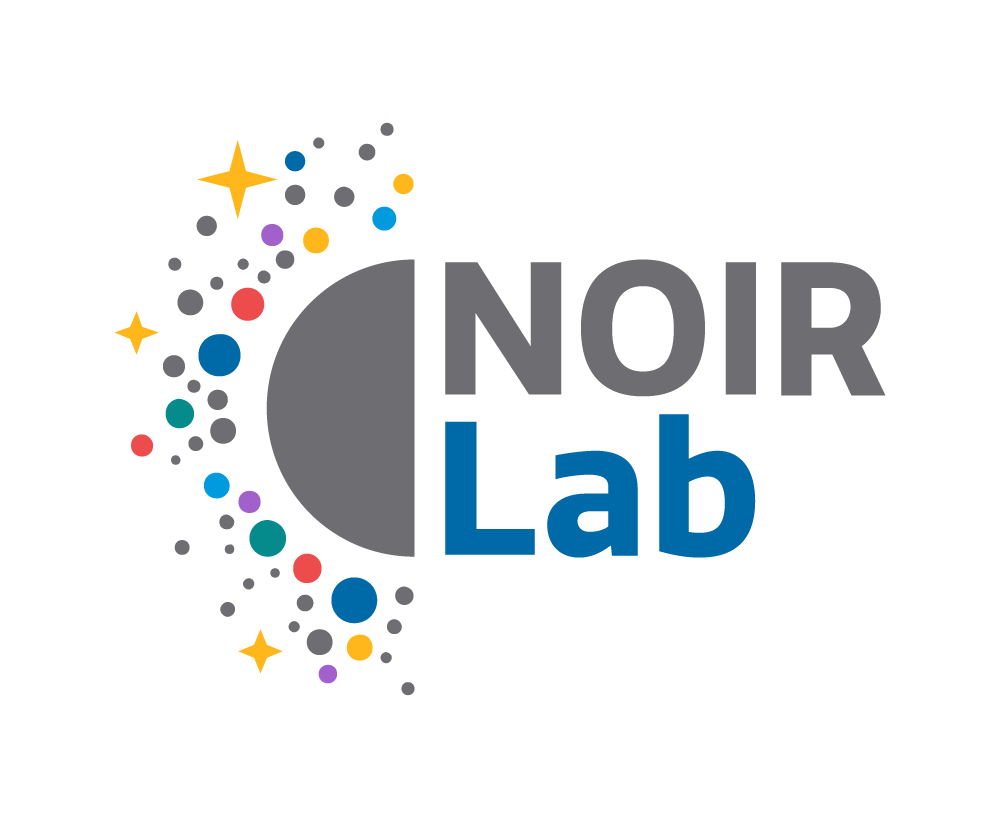Night Sky: March 2025
3 March 2025
While NOIRLab works to unravel the secrets of the Universe, you can start your own journey to explore the night sky right from your backyard. There are plenty of celestial events for skywatchers to observe every month. Below are some highlights. If you’d like to explore more on your own, we recommend Stellarium, which has a web interface and app.
1 March: Three planets hang out with the Moon
After sunset, look for Venus and Mercury near the sliver of a crescent Moon. Venus will be the brighter planet. Saturn will also be hanging out low on the horizon, but it may get lost in the Sun’s glare. Jupiter and Mars will also be visible.
5 March: Pointing the way to the Seven Sisters
After sunset, look for Mars, Jupiter, and the Moon roughly lined up with the star cluster M45, also known as the Pleiades or Seven Sisters. Venus and Mercury will be hanging out low in the west.
8 March: Mars gets cozy with the Moon
The Moon and Mars will appear very close to each other. Three other planets will also be visible.
13–14 March: Total lunar eclipse
All three NOIRLab sites will be able to enjoy a total lunar eclipse, when the Earth passes directly between the Moon and Sun. The Moon will take on an eerie reddish hue, an effect known as a ‘blood moon’. Visualizations and more information for specific locations are available here.
|
Penumbral eclipse begins |
Umbral eclipse begins |
Full eclipse begins |
Maximum eclipse |
Full eclipse ends |
Umbral eclipse ends |
Penumbral eclipse ends |
|
|
La Serena |
14 March at 12:57 a.m. |
14 March at 2:09 a.m. |
14 March at 3:26 a.m. |
14 March at 3:58 a.m. |
14 March at 4:31 a.m. |
14 March at 5:47 a.m. |
14 March at 7:00 a.m. |
|
Tucson |
13 March at 8:57 p.m. |
13 March at 10:09 p.m |
13 March at 11:26 p.m. |
13 March at 11:58 p.m. |
14 March at 12:31 a.m. |
14 March at 1:47 a.m. |
14 March at 3:00 a.m. |
|
Hilo |
13 March at 5:57 p.m. (below horizon until 6:21 p.m.) |
13 March at 7:09 p.m. |
13 March at 8:26 p.m. |
13 March at 8:58 p.m. |
13 March at 9:31 p.m. |
13 March at 10:47 a.m. |
14 March 12:00 a.m. |
All times local. The eclipse is most noticeable starting with the umbral phase, when the darkest part of Earth’s shadow begins to fall on the Moon.
19–20 March: March Equinox
Happy March Equinox! On this day the Earth’s axis will be perpendicular to the Sun’s rays, with the Sun positioned right over the equator. It’s the first day of spring for the northern hemisphere, and the first day of fall for the southern hemisphere. Learn more here. The official time of equinox is 20 March at 2:01 a.m. for Tucson, 20 March at 6:01 a.m. for La Serena, and 19 March at 11:01 p.m. for Hilo.
23 March: Saturn ring plane crossing
Every 13 to 15 years, the Earth and Saturn fall into an alignment so that we see Saturn’s rings edge-on from Earth. Scientists have in the past used this opportunity to discover new moons around the ringed planet. Unfortunately, this ring crossing will occur while Saturn appears very close to the Sun. The planet will be visible again just before sunrise in a few weeks, at which point you’ll be able to see the rings near-edge-on with a binoculars or a telescope.
Note: Never look directly at the Sun through binoculars or a telescope, or with your unaided eyes. Serious eye damage can occur.
Contacts
Jason Davis, jason.davis@noirlab.edu





